It’s not just the Women’s World Cup happening in Australia (and New Zealand) this week. U.S. Secretary of State Antony Blinken and U.S. Secretary of Defense Lloyd Austin are heading there as well, and while they’ll both make sure to see a match, they have other business — specifically the 33rd session of what’s known as AUSMIN, an acronym for the Australia-United States Ministerial Consultations, the principal ministerial-level meeting through which the United States and Australia manage their long-standing alliance. While in the Pacific, they’ll also travel (separately) to Tonga, New Zealand, and Papua New Guinea as part of a wider, ongoing American effort to up its game in Oceania, that sparsely populated set of islands that stretch across the central reaches of the Pacific. The driving force in all this, of course, is a response to China’s sustained increase in presence, engagement, economic ties, and logistics presence across this region – across the 8,000 nautical miles that separate China from the United States.
At Brookings on July 21, U.S. Assistant Secretary of State Daniel Kritenbrink and U.S. Assistant Secretary of Defense Ely Ratner laid out the agenda and itinerary (and compared notes on their bosses’ respective flight arrangements; no surprise – the SecDef has the better plane.) They spelled out an impressive set of accomplishments and near-term objectives in the Indo-Pacific. These range from renewed diplomatic engagement to people-to-people initiatives to improved defense posture in the region to new strategic initiatives.
The administration has a strong case — the litany of major enhancements of America’s presence in the region is long and substantial. Notable on the list: renewed basing arrangements in the Philippines; a new, joint U.S.-Australia base/logistics station in Papua New Guinea; the Australia-U.K.-U.S. submarines plus agreement; new arrangements for trilateral defense cooperation between the United States, Australia, and Japan; and the reopening of embassies, USAID offices, and Peace Corp offices in several Pacific Island nations.
Challenges ahead
For all that, there are several challenges ahead. The biggest, by far, is matching the scale of new diplomatic and strategic investment with deeper economic ties. As my colleague Mireya Solís has repeatedly emphasized, the economic dimension of U.S. relations in the Asia-Pacific region lags the strategic. Even the administration’s new Indo-Pacific Economic Framework, while it’s gained several adherents, is widely viewed in the region as a tepid alternative to the earlier proposed Trans-Pacific Partnership trade agreement. This matters particularly to the advanced economies of East Asia.
For the island nations of Oceania, the deficits are different. While the trip will feature the first-ever U.S. secretary of state visit to Tongo and the first-ever U.S. secretary of defense visit to Papua New Guinea, there has been a simple lack of sustained attention. There’s a reason there are so many “firsts” on the administration’s list of tasks — since the end of the Cold War, successive U.S. administrations have largely neglected Oceania. (Australia and Japan have a better track record.) While the Biden administration’s attention is welcome in most of the region, no one has forgotten the long period of neglect. Overcoming a suspicion that the reengagement is driven purely by geopolitical interests will require sustained, patient engagement.
What’s more, U.S. policy is weak on an issue central to these countries interests — nay, existence — namely climate change and adaptation. U.S. policy on financing for climate adaptation — which has evolved from outright hostility to belated grudging acceptance — is a major thorn in the side of U.S. relations in these islands, whose very existence is threatened by sea-level rise. (And not just in Oceania; it’s a major weakness in American efforts to improve its standing across the global South.)
China’s allure
And not everyone is welcoming of renewed U.S. and Western interest. In the Solomon Islands, a long period of operating under the Regional Assistance Mission in Solomon Islands (RAMSI), a U.N.-backed, Australian-led governance and police mission with extensive powers, has given way to a request from Solomon Islander President Manasseh Sogavare for a Chinese police presence in his country. Vanuatu is sending similar signals. In these Oceanic capitals, China is seen as present and able to deliver. (That’s especially so because on critical global issues like sea-level rise and climate change, China can support small island states in multilateral fora without much cost; it’s the West that’s expected to pay the bill for adapting to a changing climate.) And in Kiribati, President Taneti Maamau has withdrawn his country from the main regional multilateral mechanism, the Pacific Islands Forum, signaled his displeasure with the West, cut diplomatic ties with Taiwan, and accepted a Chinese bid to restore an airstrip on the island. This is an ostensibly commercial venture, but one whose scale suggests military uses down the road. Given Kiribati’s geographical position, right in the heart of the central Pacific and due south of Hawaii, a Chinese People’s Liberation Army Air Force presence in Kiribati would give the U.S. Navy serious heartburn.
U.S. policy, therefore, must work on three simultaneous tracks. Track one, well underway, involves tightening up the latticework of relationships between the major U.S. allies in East Asia, and making those relationships increasingly operational. Adding economic depth to that track is vital. Track two involves securing, deepening, and extending the U.S. arc of presence across the north Pacific, from Hawaii via Guam to the Federated States of Micronesia and Palau — also well underway. The third track is more troublesome: containing or reversing the growing arc of Chinese presence along the southern arc of the Pacific, from Solomon Islands to Kiribati. This will require the United States —working closely with Australia, Japan, and other partners like France and India — to show up and make long-term commitments.
Good thing the SecDef’s plane has in-flight refueling.

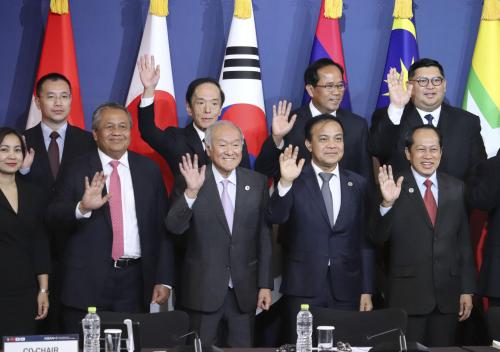
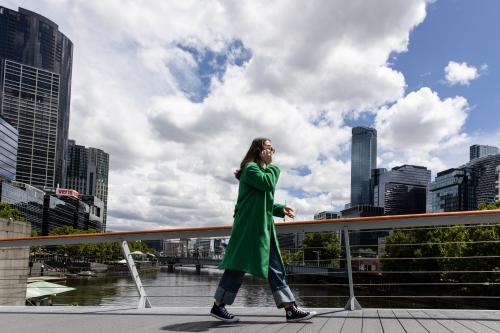
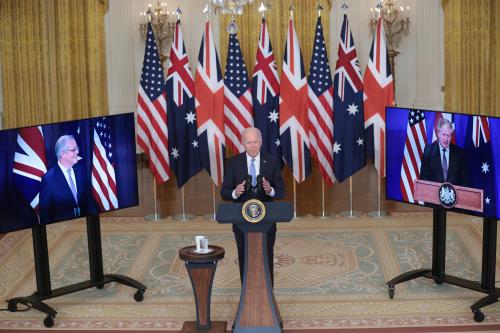
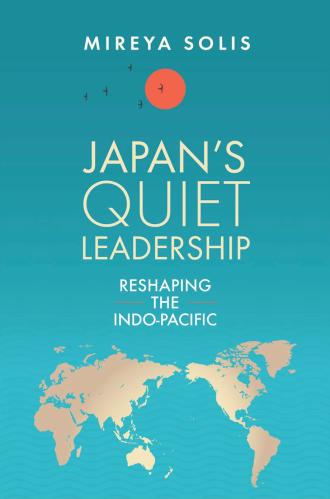
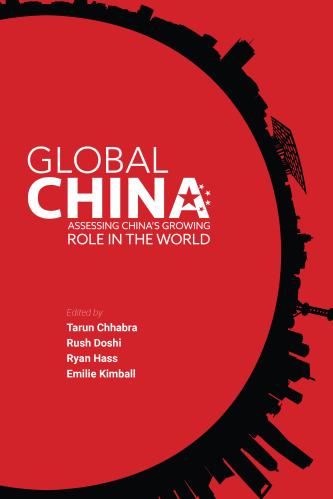
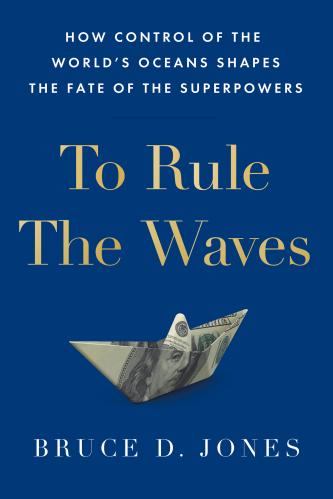


Commentary
Why Blinken and Austin are heading to the land Down Under
July 26, 2023